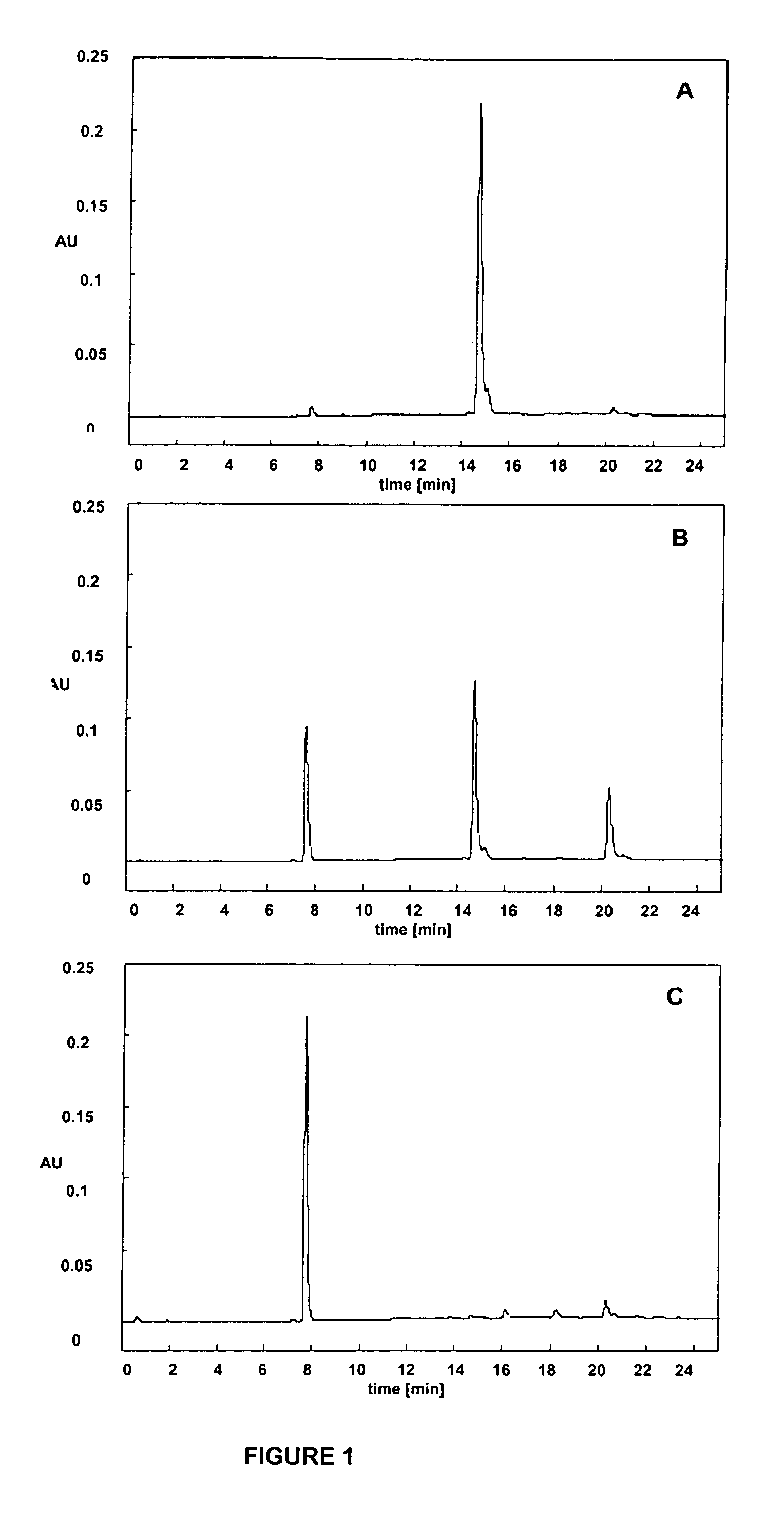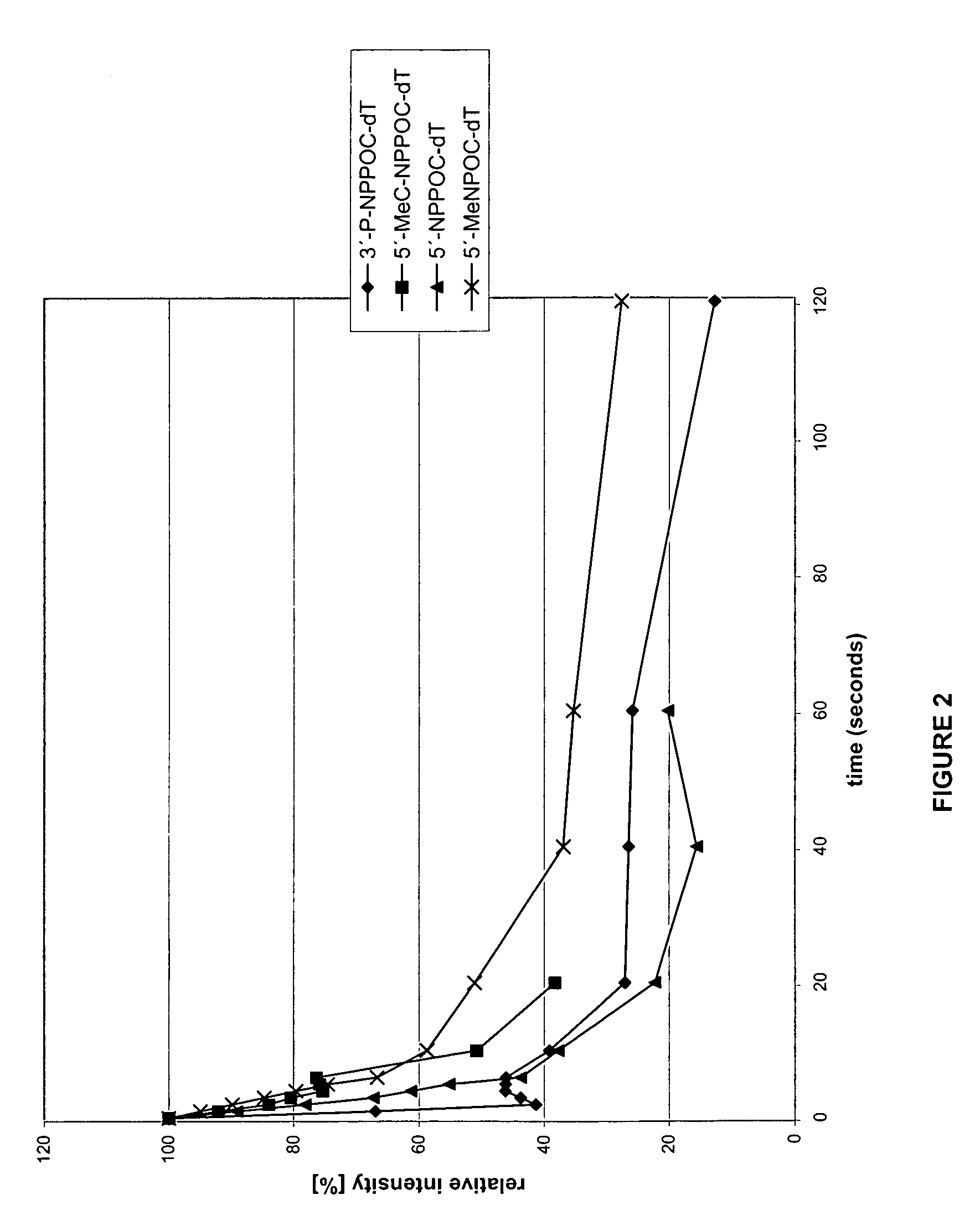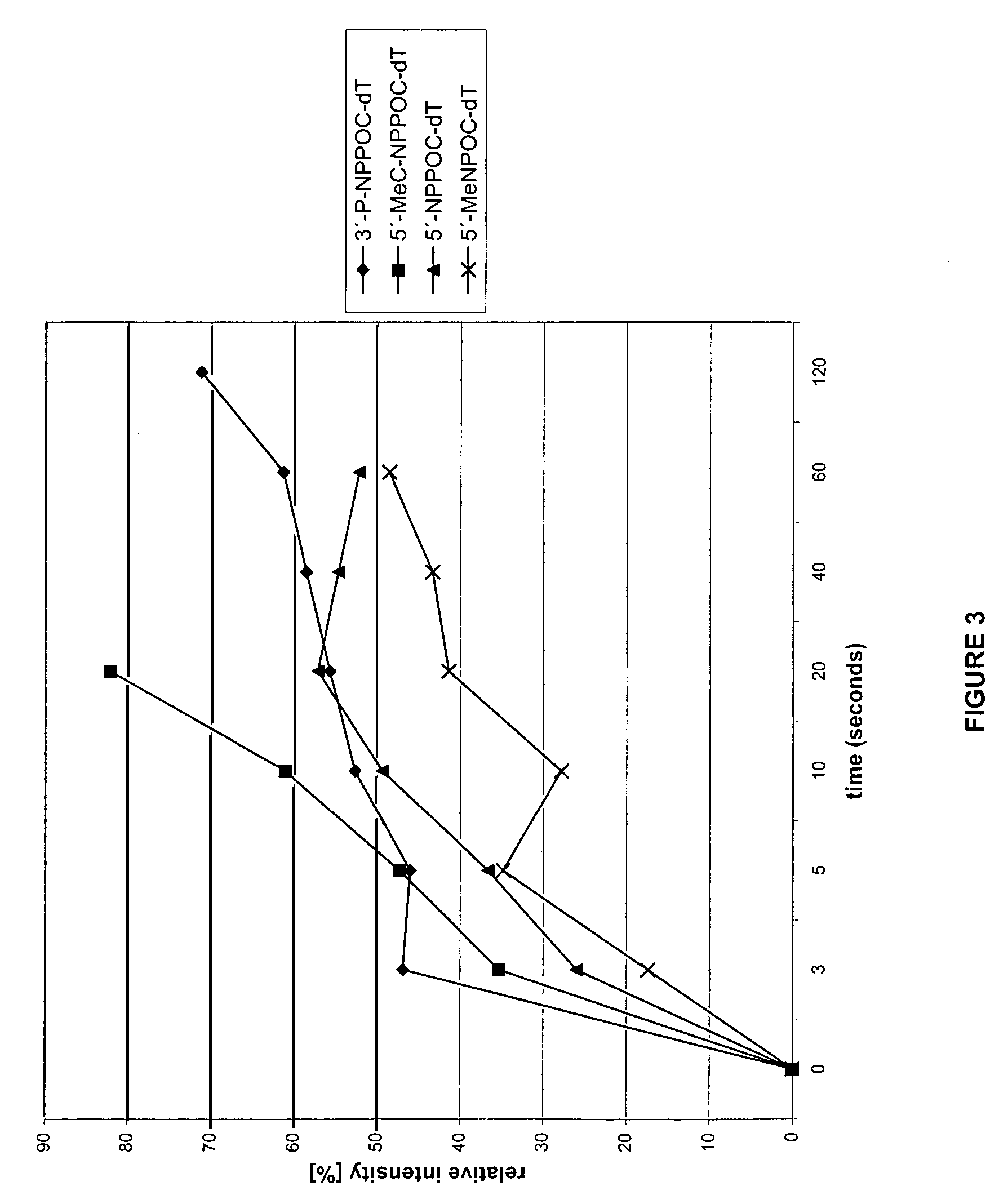Photolabile protective groups for improved processes to prepare oligonucleotide arrays
a technology of protective groups and photolabile, which is applied in the field of photolabile compounds and reagents, can solve the problems of truncated oligonucleotide probes, failure sequence formation and truncation, unsatisfactory deprotection rates and yields, etc., and achieves enhanced cycle efficiency, reduced deprotection times, and easy handling and storage.
- Summary
- Abstract
- Description
- Claims
- Application Information
AI Technical Summary
Benefits of technology
Problems solved by technology
Method used
Image
Examples
example 1
Preparation of 3-ethyl-4-nitro-halo benzenes (10) (Scheme 1)
[0164]a) 3-Ethyl-acetylamino benzene (8). Compound (8) was prepared according to a modified procedure originally described by Wieland et al. (1938) Liebigs Ann., 536:89, which is incorporated herein by reference in its entirety. With reference to Scheme 1, 3-ethylaniline (7) (25 mL, 27 g, 0.22 mol) was added to acetic anhydride (100 mL) in an ice bath and the reaction mixture was stirred for 10 minutes with cooling and for an additional 20 minutes without cooling. Evaporation and subsequent distillation (110-114° C. / 0.05 mbar) yielded 32.1 g (89%) of compound (8) as light yellow crystals. mp 30-32° C. Rf=0.42 (hexanes / EtOAc 1:1). 1H NMR: (250 MHz, CDCl3) δ 7.60 (s, 1H, NH), 7.34-7.16 (m, 3H, 3×arom. H), 2.59 (q, 2H, CH2), 2.14 (s, 1H, C(O)CH3), 1.18 (t, 3H, CH3). UV (λmax[nm] (log ε); MeOH): 206 (3,41); 242 (3,10); 280 (1,76).
[0165]b) 4-Amino-2-ethyl-nitrobenzene (9). Compound 9 was prepared using a modified procedure origi...
example 2
Preparation of 3-ethyl-4-nitrobiphenyl (11a) (Scheme 2)
[0169]To a solution of 3-ethyl-4-nitro-bromobenzene (10b) (6.9 g, 26 mmol) in toluene (40 mL) was added ethanol (10.5 mL), an aqueous solution of sodium bicarbonate (2 M, 16 mL), benzene boronic acid (3.82 g, 31 mmol) and tetrakis(triphenylphosphine)-palladium (0) (400 mg, 0.35 mmol) and the mixture heated to reflux for 5 hours. After cooling saturated aqueous NaCl solution (30 mL) was added, the mixture was extracted with ethyl acetate (2×25 mL) and the combined organic extracts were dried and evaporated. After silica column chromatography (hexanes and hexanes / EtOAc 9:1), compound 11a was obtained in 92% yield (5.43 g) as yellow crystals. mp 54-56° C. Rf=0.67 (hexanes / EA 9:1). 1H NMR (250 MHz, CDCl3) δ 7.99 (d, 1H, arom. H), 7.61 and 7.38 (m, 7H, 7 arom. H), 2.99 (q, 2H, CH2), 1.33 (t, 3H, CH3). UV (λmax[nm] (log ε); MeOH): 205 (4.52), [225 (4.05)], 291 (4.04). Elemental analysis for C14H13NO2 (227.26): calc.: C, 73.99; H, 5.75...
example 3
Preparation of 3-ethyl-4-nitro-4′-methoxybiphenyl (11b) (Scheme 2)
[0170]3-Ethyl-4-nitro-4′-methoxybiphenyl (11b) was synthesized as described in Example 2, using 4-methoxybenzene boronic acid as the reagent. Following purification compound 11b was obtained in 93% yield as yellow crystals. mp 94-95° C. 1H NMR (250 MHz, CDCl3) δ 7.97 (d, 1H, 1 arom. H), 7.51 (m, 4H, 4 arom. H), 6.70 (dd, 2H, 2 arom. H) 3.85 (s, 3H, OMe), 2.99 (q, 2H, CH2), 1.32 (t, 3H, CH3). UV (λmax[nm] (log ε); MeOH): 204 (4.52), 232 (4.13), 320 (4.07)]. Elemental analysis for C15H15NO3 (257.29): calc.: C, 70.02; H, 5.88; N, 5.44; found: C, 70.00; H, 5.97; N, 5.14.
PUM
 Login to View More
Login to View More Abstract
Description
Claims
Application Information
 Login to View More
Login to View More - R&D
- Intellectual Property
- Life Sciences
- Materials
- Tech Scout
- Unparalleled Data Quality
- Higher Quality Content
- 60% Fewer Hallucinations
Browse by: Latest US Patents, China's latest patents, Technical Efficacy Thesaurus, Application Domain, Technology Topic, Popular Technical Reports.
© 2025 PatSnap. All rights reserved.Legal|Privacy policy|Modern Slavery Act Transparency Statement|Sitemap|About US| Contact US: help@patsnap.com



